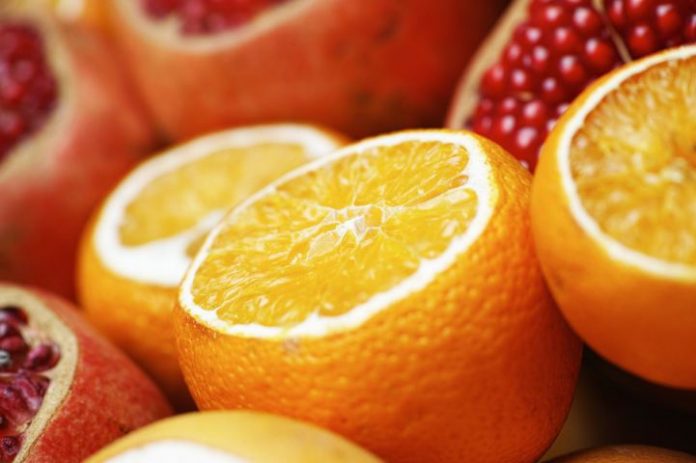You and I are facing a critical vitamin and mineral shortage. This health crisis has been growing at an alarming rate since the early 1900s. Of particular concern are folks on weight loss diets – especially low carb diets.
As a partial result, nutritionally driven chronic diseases have reached epidemic proportions. About 95% of people over 40 will suffer from one or more of these chronic diseases by the time they reach retirement.
Diseases such as cancer, heart disease, diabetes, dementia, vision loss – to name a few. That’s 95 people out of every 100.
For decades the medical community poo-pooed the nutrition “fanatics” when they mentioned the importance of vitamins and minerals as a basis of our vital health.
Then, a real shocker.
In the June 19, 2002 issue of the Journal of the American Medical Association, they announced: “Suboptimal intake of vitamins should be seen as a risk factor for chronic disease, especially in the elderly.”
This tells us that today our food contains MUCH LESS nutrition and yet our needs for vitamins and minerals are MUCH GREATER than ever before in human history.
You’ll discover, in this article, how this can be possible. And some simple steps you must take to protect yourself and your loved ones.
Plants are the sole source of all vitamins and minerals for every living creature. Even animals that eat nothing but meat – the vitamins came from somewhere down the food-chain – from an animal or fish that eats plants.
Plants create body-ready vitamins and minerals from nutrients in the soil. The richer the soil, the more vitamins and minerals are packed into the plants. On the other hand, vegetables grown in poor soil will have far lower levels of vitamins and minerals.
And the soils are becoming sand – depleting at a very rapid rate. Commercial farming really started to expand as the ability to transport the produce to new markets increased – trains, then trucks.
This was a boon for consumers. Now they didn’t have to grow their own vegetables. And they could enjoy produce that was either out-of-season or wasn’t able to grow in their area.
As commercial growers keep using the same fields year after year, the soils keep losing their rich nutrients. And, as soils deplete, so does the vitamin and mineral content of the vegetables grown in that soil.
Chemical companies have come to their aid by providing chemicals that will force the plants to grow in poor soil.
A couple of problems with this.
The vegetables look great but contain far-less vitamins and minerals they once did. They also absorb some of these chemicals. Now our body needs even more vitamins to deactivate these toxins.
The vegetables we consume today give us far-less nutrients than 100 years ago – yet create the need for more. A double whammy.
Genetic engineers have created vegetables that are more disease resistant, grow faster, are more visually attractive, and are easier to harvest.
For example, a new tomato was developed for growers primarily to take a 5-mile-per-hour impact from the faster picking machines.
Tough skin tomatoes – you’ve probably had some. Nothing is being done to increase the nutrient levels of the plants – or to enrich the soil.
Some vegetables and most fruits you buy in the store are picked before they’re ripe, and often chemically treated so they ripen on the way to the grocer’s shelf.
This gives the product a lot longer shelf lifeless waste. As you probably know, produce picked at its ripe peak contains maximum nutrients – but spoil quickly.
Vine-ripened, fresh produce can be quite unprofitable for the grower and grocer.
On top of all this, consider the higher levels of air and water pollution, lower oxygen levels in the air we breath, and our fast-paced, fast food societies of today.
You can easily see that our wonderfully created bodies are being taxed to the max – and need more protection than ever before.
What Do We Do Today?
1. Make fresh, whole fruits, vegetables, and grains a larger part of your daily diet. These are the absolute best quality vitamins and minerals you can buy. Eat them raw, uncooked as much as possible.
If necessary, cook slowly at low heat to keep the nutrients at the highest possible levels. Simply put – the less processing the better.
Most people do not eat even the minimum recommended amounts, yet we all need much more than that today.
2. Look for organically grown produce at your grocery store or health food store. Generally, this product will contain much higher levels of nutrients – as they did a century ago – without the chemicals.
They cost more but you get a LOT MORE nutrients and much more succulent flavor than commercially grown produce.
3. Grow some of your own produce – in a yard garden, patio pots, or inside the home in window pots. It’s fun, very easy, decorative, puts oxygen in the air and the taste and nutrition are just tons better than store-bought.
4. No matter how perfect our diet, we ALL need to invest in a GOOD vitamin supplement today. Even nutrition experts, who eat an “ideal” diet, take vitamin supplements.
A good vitamin will require you to take 3 large tablets or six medium size tablets or capsules per day minimum. Anything less is a waste of money.
You’ll find good quality vitamin supplements at most reputable vitamin or health food stores. Best bet – buy online for the best price and selection of high-quality vitamin supplements.
Financially speaking, this is a critical part of our retirement program. If we don’t have good health at retirement, nothing else will matter.
Vitamin supplements are, by far, the cheapest health insurance and wisest retirement plan we can invest in.

